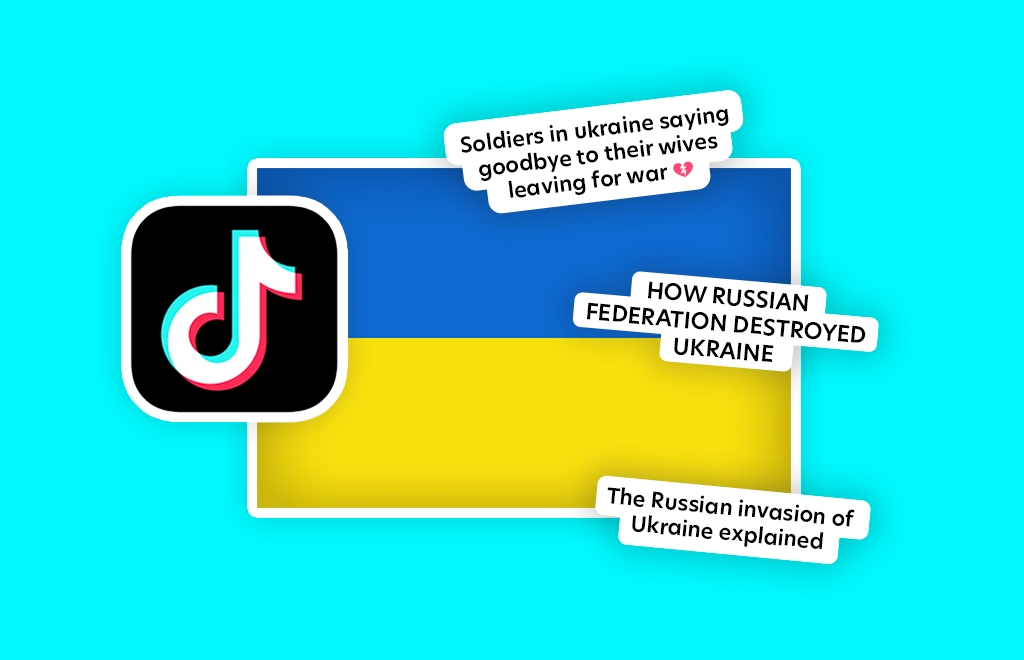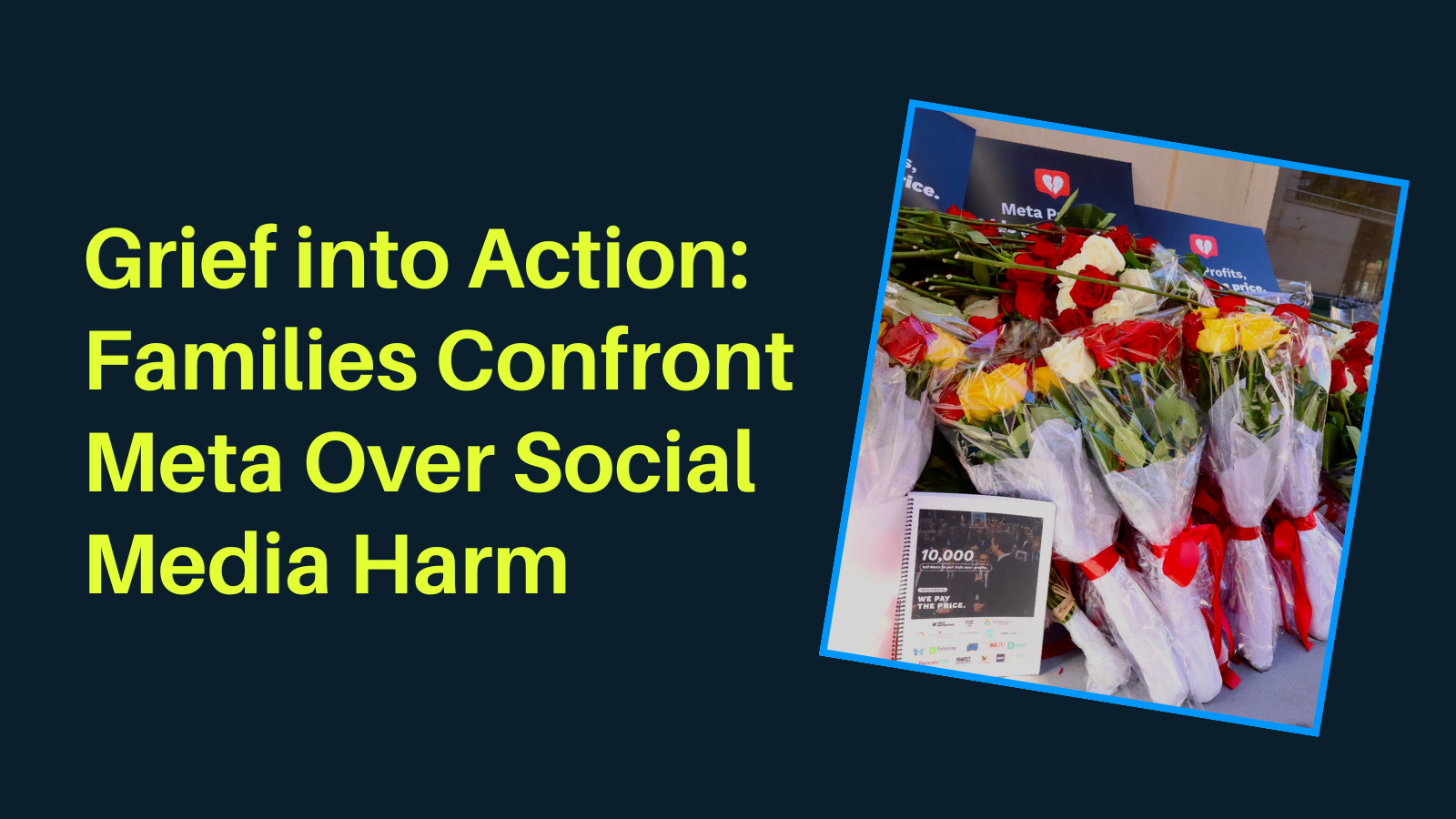As the Russian invasion of Ukraine unfolded, a global audience watched the tragedy take place in real time via social media. To be clear, this is far from the first global conflict to be showcased on social media or use the platforms as an organizing mechanism. But it’s jolting to see the cruelties and destruction of Russia’s unprovoked and unjustified invasion on display across social media platforms alongside viral dance videos.
The Information War Playing Out Over Social Media
Currently, the information war taking place alongside the physical war in Ukraine builds the case, demonstrating how harmful social media can be. As we aim to keep ourselves informed on the human rights crisis taking place, we cannot overlook the means by which we are consuming war-related news. While it may seem convenient to learn about the latest on Ukraine by simply scrolling your news feed, it can be extremely difficult to verify the credibility and discern the context of the posts you are viewing. Legitimate reporting and rallying cries from everyday Ukrainians on the frontlines of the war are interwoven with mis/disinformation and pro-Kremlin propaganda, indistinguishably mashed together into endless content feeds designed to maximize your engagement.
As social media has become the main conduit for pushing war related news out to the masses, both Ukraine and Russia have leveraged the platforms as a part of their overall war strategies. Ukraine aims to utilize social media as a tool to elicit sympathy and highlight Ukrainian bravery and Russian brutality. The Kremlin, on the other hand, seeks to spread outright falsehoods to justify their invasion and whitewash their crimes against humanity, cracking down on Russians’ access to independent media and spewing rampant disinformation both domestically and abroad. For those with a vested interest in advancing a specific narrative, global social media platforms that prioritize engagement over truth are the perfect mechanism for an information war.
TikTok Has Emerged as Most Popular App for Sharing War Content
A significant portion of the content on social media about Putin’s war on Ukraine is coming from TikTok. The app’s core features – designed to help people share and record their own content – have made it easy to spread unverified videos across its platform. TikTok’s algorithm on its “For You” page (FYP) – which displays videos algorithmically recommended based on what people have previously seen, liked, or shared – can promote the spread of fake or misleading news. Unlike on other major platforms, where the user’s feed is filled primarily with content from friends and people they know or have chosen to follow, TikTok’s “FYP” is largely content from strangers, as determined by the platform’s opaque algorithm. This near-total reliance on algorithmic curation of engaging video content makes the platform especially susceptible to mis/disinformation, and exceedingly difficult to moderate.
Viewing one video with misinformation or a particular bias typically leads to a viewer being inundated by more of the same. Rabbit holes happen faster on TikTok because a user tends to watch more videos in a shorter time than on other platforms, where videos still tend to be minutes rather than seconds long. By its very nature, this endless stream of ephemeral user-generated videos is rife for viral disinformation to go unchecked around fast-moving crises – and that’s exactly what’s happened. While it’s difficult to determine how well TikTok is enforcing its own content moderation policies, it is clear that it has become a vector for disinformation about the war in Ukraine.
As technology advances, content creators can more easily manipulate photos and videos, weaponizing technology to create whatever narrative they desire. In fact, some of TikTok’s core features prime it for remixing media, allowing users to upload videos and sound clips without attributing their origins, making it even more difficult to contextualize and factcheck videos. On the platform, videos of unrelated explosions were re-posted as if they were from Ukraine and media uploaded from video games were passed off as footage of real-life events. TikTok’s platform architecture is permitting misinformation to thrive at a time of high anxiety.
TikTok’s Popularity Must Come With Accountability
TikTok has grown exponentially since its founding in 2012. Named one of the world’s fastest-growing social media apps, the platform recently surpassed 3.5 billion all time downloads, and it’s not just surpassing other social platforms, but becoming a more popular destination than Google. And as if all of this weren’t concerning enough, there is the matter of TikTok’s ownership by Chinese internet company ByteDance, and the murky nature of its relationship with Beijing’s repressive regime. Longstanding concerns about TikTok’s ability to censor content or manipulate discourse to advance Chinese interests have been compounded by the Chinese Communist Party’s close alignment with the Kremlin, as the two autocratic nations trumpet the same lies about the war.
Although there has been much debate and political grandstanding over TikTok’s implications for our national security, little tangible action has been taken to hold the platform accountable for the systemic threats it poses to democracy. Given TikTok’s massive reach and its prominent role in the spreading of harmful misinformation around Putin’s invasion of Ukraine, we must be clear-eyed about its capacity to sow widespread harm and do more to ensure the platform protects democratic interests and the wellbeing of its billions of users.
The Way Forward
Given the plague of mis-and-disinformation infecting our information ecosystem – and Big Tech’s reliance on powerful and toxic content-shaping algorithms to maximize engagement and profits – the intertwining of (often-unvetted) news with content meant for entertainment or social networking has become increasingly harmful.
While the spotlight has long been on platforms like Facebook, YouTube, and Twitter that continue to serve as major vehicles for spreading falsehoods, it’s past time that we stop treating TikTok as an afterthought or a silly dance app; it’s one of the world’s most influential platforms and presents unique threats to truth and democracy. As users of social media, we should try to keep that in mind and think critically as we scroll through the endless content streams – but ultimately, we need structural reforms to hold platforms like TikTok accountable for the systemic harms driven by their products and business practices.








